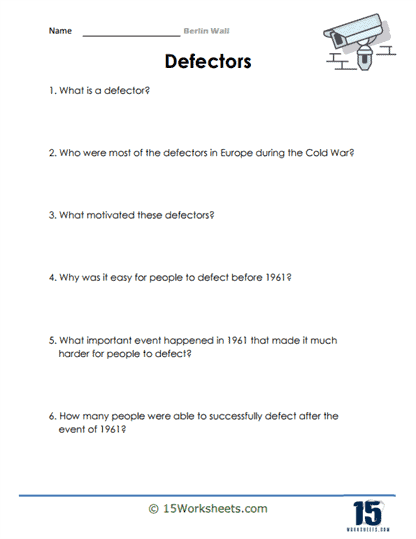Defectors

Worksheet Description
This worksheet seeks to explore the definition of a defector, identify the majority of these defectors in Europe during the Cold War, understand their motivations, and analyze the conditions that made defection easier or harder at specific times. The questions specifically emphasize the significance of the year 1961, asking students to reflect on the events of that year and their impact on defection. Through these queries, the worksheet provides insights into the challenges and circumstances faced by individuals trying to escape oppressive regimes during a tense period in history.
To tackle this worksheet, students should start by understanding the term “defector” and its implications during the Cold War. They should then proceed to gather information from reliable historical sources, textbooks, or class notes regarding defections in Europe, especially focusing on the time before and after 1961. The key is to understand the socio-political dynamics of the era, especially concerning East Germany and the construction of the Berlin Wall. Based on their research and knowledge, students can then answer the questions, ensuring they provide detailed and accurate responses that capture the essence of the events and motivations discussed.
The primary aim of this worksheet is to enlighten students about the phenomenon of defection during the Cold War, offering a human-centric view of the larger political drama. It pushes students to think critically about why individuals might have chosen to leave their homeland, the risks they took, and the barriers they faced. Through focusing on the year 1961, the worksheet underscores the significance of the Berlin Wall in shaping the trajectory of defections. Ultimately, it aspires to make students appreciate the personal stories and challenges interwoven with major historical events, fostering empathy and a deeper understanding of the era.
